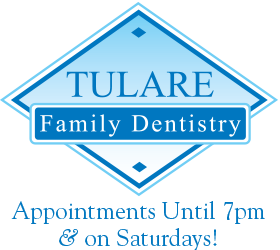Crowns & Bridges
Crowns
Severe tooth decay can sometimes destroy a tooth to the point where a filling cannot keep it intact. Left untreated, these teeth can break down even further. In these cases, dentists rely on dental crowns to protect what’s left of the tooth.
 Dental crowns are one of the most important restorations we offer. A crown can save a broken or decayed tooth by holding it together & protecting it from further damage. It can also serve as a beautiful replacement for an unsightly tooth.
Dental crowns are one of the most important restorations we offer. A crown can save a broken or decayed tooth by holding it together & protecting it from further damage. It can also serve as a beautiful replacement for an unsightly tooth.
A crown, also called a cap, is a good way to cover teeth that are discolored or badly shaped as well, or to cover a dental implant. A crown can make your tooth stronger & improve its appearance.
A crown acts the same way as a tooth, so after your crowns are placed, you should treat it the same way as well. Continue to brush & floss regularly & see your dentist for regular checkups!
What Is A Dental Crown?
In dentistry, a crown or a cap is a fake tooth that fits on top of a damaged tooth. They are custom-made to fit your smile & are built to last. There are a number of conditions that rely on crowns to save your teeth. You may even need a crown after undergoing certain dental treatments. A root canal or large filling can weaken an affected tooth & make it very vulnerable to cracking or breaking, so a crown is needed for protection. Crowns can also be used as a cosmetic treatment to improve the look of a misshapen or discolored tooth.
There are several types of crowns available to you, & each one varies in terms of appearance & strength.
Metal Crowns
Metal crowns are comprised of gold or other alloys (mixtures). They are the most durable type of crown available & the least likely to wear down your opposing teeth. The downside of metal crowns is that they do not blend into your smile, so you may not want them on your most visible teeth.
Ceramic Crowns
Ceramic crowns are made from porcelain & primarily used for their aesthetic qualities. They can be matched to the exact color of your teeth & are a great option for restoring your front teeth. However, they are the least durable crowns available. Porcelain can be too fragile to replace teeth that are put under a lot of strain, such as molars. They can also be rough on your other teeth.
Porcelain-Fused-to-Metal Crowns
Porcelain-Fused-to-Metal (PFM) crowns combine the qualities of ceramic & metal alloy crowns. With a porcelain exterior & a metal interior, these crowns are built for strength as well as looks. While boasting the best of both worlds, they also have drawbacks. The edge of the metal portion of the crown may become visible at your gum line, affecting its aesthetics. Additionally, the outer porcelain layer can wear down your other teeth or become damaged just like all-porcelain crowns.
Zirconia Crowns
Zirconia is a type of metal that is naturally tooth-colored, making it a popular crown material for many dentists. Like other metal crowns, it is also extremely durable. Unfortunately, zirconia is neither as aesthetically pleasing as porcelain nor as easy on the teeth as metal alloys.
Procedure Overview
Once we have determined the best kind of crown for you, we will schedule two appointments for you. During the first appointment, the dentist prepares your tooth for your custom-made crown. At the second appointment, they will permanently place the crown.
- Before the dentist can prepare your tooth for a crown, they will need to remove any tooth decay & perform fillings or root canals if necessary.
- Next, they need to remove enough of your tooth enamel for the crown to fit over it. You will receive local anesthesia to numb your tooth before the dentist begins to trim it down. The amount of tooth enamel that needs to be removed depends on which kind of crown you choose, with metal crowns requiring the least removal.
- Once your tooth has been prepared, we will take an impression (mold) of your teeth. The dentist will carefully pull the gums away from the prepared tooth using a small cord. Then you will need to bite down on putty-filled trays for a few minutes. This putty mold is sent to a lab, which will create an aesthetic match of your damaged tooth to fit comfortably alongside your original teeth. If you are getting a ceramic, porcelain-fused-to-metal or zirconia crown, the lab will match your crown to the color of your other teeth.
- The final step of your first appointment is getting a temporary crown. The dentist needs to place a temporary crown over the prepared tooth in order to protect it from any damage while you wait for your next appointment.
- It will take a couple weeks for the lab to craft your personalized crown. Once it is ready, you will come in for your second appointment so the dentist can make sure it fits comfortably & securely.
- When they find the right fit, they will permanently attach the crown with a bonding resin.
Dental crowns need to be treated with the same care as regular teeth. While the crown itself can’t decay, the tooth underneath it can. Regular brushing & flossing is essential to maximizing your crown’s lifespan. If properly cared for, a typical crown can last anywhere from 10 to 50 years!
Bridges
As much as we try to take care of our dental health, tooth loss happens. Dentists have mastered the art of replacing lost teeth & their toolkits are full of solutions to fit your specific needs.
 It is important to understand that replacing a missing tooth is not just about looks. After losing a tooth, the surrounding teeth can shift out of place & it may become difficult for you to bite, chew & speak. The resulting bone shifting can even affect your overall facial structure.
It is important to understand that replacing a missing tooth is not just about looks. After losing a tooth, the surrounding teeth can shift out of place & it may become difficult for you to bite, chew & speak. The resulting bone shifting can even affect your overall facial structure.
Replacing missing or rotten teeth is essential to keeping your mouth healthy in the long run. A missing tooth can cause more trouble than just an unsightly gap in your smile. Tooth loss can cause your remaining teeth to shift around the gap, changing the alignment of your smile & even causing changes in your facial aesthetics.
What Is A Dental Bridge?
Dental bridges are designed to replace a missing tooth & to stabilize the teeth on either side of the gap. There are few types of bridges available, but in most cases, bridges consist of a fake tooth (known as a pontic) that is supported by one or more neighboring teeth. Unlike a dental implant, a tooth replaced by a bridge is not directly rooted in your jaw, but is instead attached to nearby teeth.
Traditional Bridge
The most common kind of dental bridge is called a traditional bridge. This is a pontic tooth attached to two dental crowns that will cover the adjacent teeth. In order to fit the crowns over the other teeth, the dentist needs to file them down. The crowns (sometimes called abutments) are placed over your reshaped teeth & secured with a composite bonding resin.
Cantilever Bridge
A cantilever bridge is similar to a traditional bridge, but the pontic only attaches to one abutment instead of two. Because it is only secured on one side, this bridge is mostly used for teeth in the very back of your mouth.
Maryland Bridge
The last kind of bridge is called a Maryland bridge. Instead of using crowns to secure the pontic, a Maryland bridge uses metal or porcelain bands that attach to nearby teeth with bonding resin. The main benefit of this method is that none of your teeth need to be filed down. The downside is that they are weaker than a traditional bridge & may not be suitable to replace molars, which put a lot more strain on the bridge when chewing.
Procedure Overview
Getting a dental bridge is more involved than your average checkup. If you’ve gotten a dental crown in the past, getting a bridge will be a pretty similar experience for you. It will take more than one appointment to prepare your teeth & place the bridge. If you need any dental work done on the supporting teeth, such as a filling or root canal, this must happen beforehand.
- Once any necessary treatment is complete, the dentist will remove enamel from the supporting teeth to make room for the abutment crowns.
- They will make a mold of the area & send it to a lab that will craft your own personalized bridge. This normally takes a few weeks.
- While you wait for your custom restoration, you will be given a temporary bridge.
- At the final appointment, the dentist will place your permanent bridge & make any necessary adjustments.
How long your bridge lasts depends on how well you take care of it. If properly cared for, a dental bridge can last well over 10 years. Brushing your teeth twice a day, flossing at least once a day, cleaning underneath the pontic, & coming in for regular teeth cleanings & maintenance will ensure the longest lifespan for your bridge.
